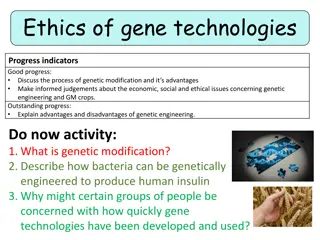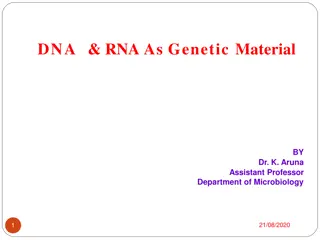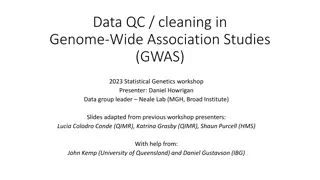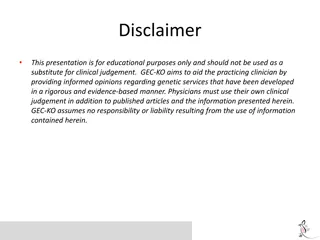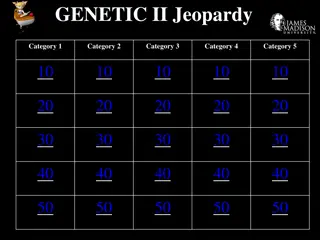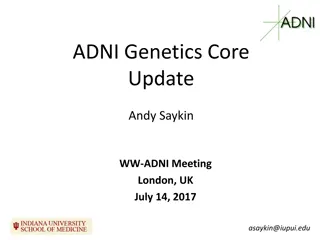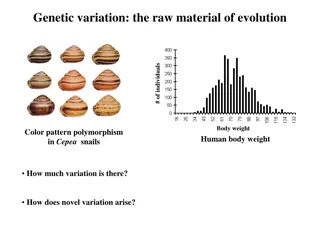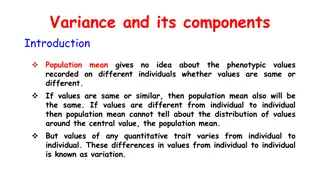Insights into Synthetic Writing Components and Genetic Modification Studies
Explore the key components of synthetic writing by examining studies on genetically modified organisms' effects on animals. Evidence from various research works is synthesized to draw conclusions on safety and impacts, showcasing the importance of thorough evaluation in scientific studies.
Download Presentation

Please find below an Image/Link to download the presentation.
The content on the website is provided AS IS for your information and personal use only. It may not be sold, licensed, or shared on other websites without obtaining consent from the author. Download presentation by click this link. If you encounter any issues during the download, it is possible that the publisher has removed the file from their server.
E N D
Presentation Transcript
Synthesis Practice 5-minute workshop
Synthetic writing components Topic sentence that states the message of the paragraph Evidence that supports topic sentence from a variety of sources Conclusion based on the synthesis of the evidence
Using the lines of evidence below, construct your own synthetic paragraph. Remember to include the key components of synthetic writing. Noteborn et al. (1995) studied the effects of consumption of genetically modified, Bt resistant tomatoes on rats for 90 days and found that body weights and food consumption were normal. Microscopy examination of tissues did not show adverse effects. Chen et al. (2003) fed both rats and mice genetically modified sweet pepper for 30 days and found no significant differences with rats fed non-GM sweet peppers. Hammond et al. (2004) fed Roundup Ready weeks. They found no adverse effects on overall health, body weight, food consumption, clinical pathology parameters, organ weights, and gross and microscopic appearance of tissues. corn to rats for 13
Check your learning: What is the message of the your paragraph? Is that reflected in your topic sentence? What is your conclusion? Have you synthesized your own argument based on the evidence? Remember: This paragraph should not be a summary, but your own synthetic idea!
References Chen, Z. L., Gu, H., Li, Y., Su, Y., Wu, P., Jiang, Z., Ming, X., Tian, J., Pan, N., and Qu, L. J. 2003. Safety assessment for genetically modified sweet pepper and tomato. Toxicology, 188: 297 307. Hammond, B., Dudek, R., Lemen, J., and Nemeth M. 2004. Results of a 13 week safety assurance study with rats fed grain from glyphosate tolerant corn. Food Chem. Toxicology, 42: 1003 1014. Noteborn, H. P. J. M., Bienenmann-Ploum, M. E., van den Berg, J. H. J., Alink, G. M., Zolla, L., Reynaerts, A., Pensa, M., and Kuiper, H.A. 1995. Safety assessment of the Bacillus thruringiensis insecticidal Crystal ProteinCRY1A(b) expressed in transgenic tomatoes. In: Genetically Modified Foods. Safety Aspects. pp. 134 147. Engel, K. H., Takeoka, G. R., and Teranishi, R., Eds., ACS Symposium Series 605, Washington, DC.
Using the lines of evidence below, construct your own synthetic paragraph. Remember to include the key components of synthetic writing. In groups of wolves, meerkats and tamarins, only one adult female will typically reproduce, even though several are present (Clutton-Brock 2002). Genetically determined, species-specific patterns of oxytocin and vasopressin receptor distributions in the forebrain in closely related species of voles (Microtus spp.) are linked either to a monogamous or promiscuous mating system (Insel 2010). In several species of lemurid primates, neighboring social units may consist of pairs, one female and several males, one male and several females or multiple males and multiple females, respectively (Pochron & Wright 2003).
References Clutton-Brock, TH. 2002. Breeding together: kin selection and mutualism in cooperative vertebrates. Science 296, 69 72. Insel, TR. 2010. The challenge of translation in social neuroscience: a review of oxytocin, vasopressin, and affiliative behavior. Neuron 65, 768 779. Pochron ST, & Wright PC. 2003 Variability in adult group compositions of a prosimian primate. Behavioral Ecology & Sociobiology 54, 285 293.

























